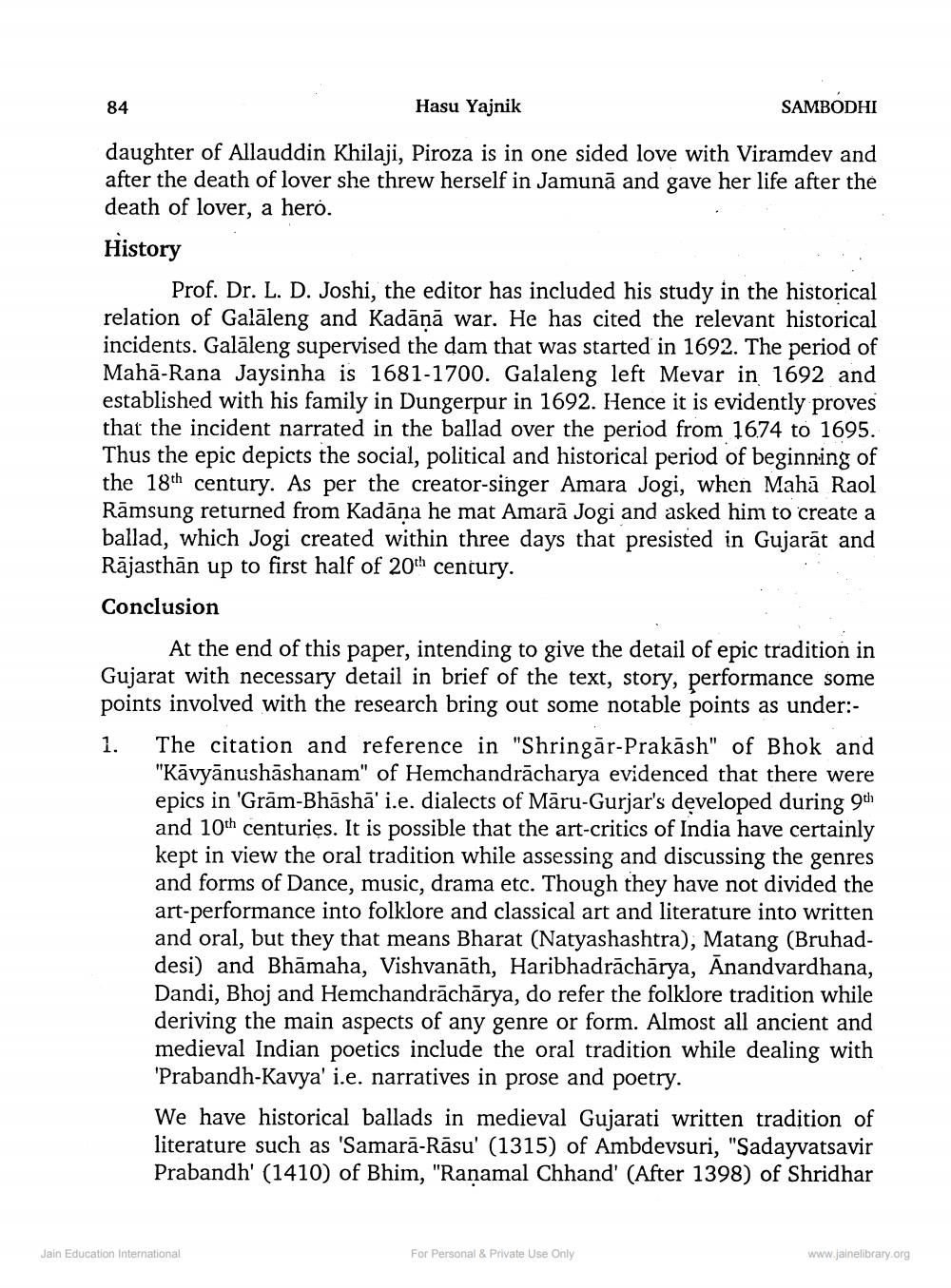________________
84
Hasu Yajnik
SAMBODHI
daughter of Allauddin Khilaji, Piroza is in one sided love with Viramdev and after the death of lover she threw herself in Jamunā and gave her life after the death of lover, a hero. History
Prof. Dr. L. D. Joshi, the editor has included his study in the historical relation of Galāleng and Kadānā war. He has cited the relevant historical incidents. Galāleng supervised the dam that was started in 1692. The period of Mahā-Rana Jaysinha is 1681-1700. Galaleng left Mevar in 1692 and established with his family in Dungerpur in 1692. Hence it is evidently that the incident narrated in the ballad over the period from 1674 to 1695. Thus the epic depicts the social, political and historical period of beginning of the 18th century. As per the creator-singer Amara Jogi, when Mahā Raol Rāmsung returned from Kadana he mat Amarā Jogi and asked him to create a ballad, which Jogi created within three days that presisted in Gujarāt and Rājasthān up to first half of 20th century. Conclusion
At the end of this paper, intending to give the detail of epic tradition in Gujarat with necessary detail in brief of the text, story, performance some points involved with the research bring out some notable points as under:1. The citation and reference in "Shringār-Prakāsh" of Bhok and
"Kāvyānushāshanam" of Hemchandrācharya evidenced that there were epics in 'Grām-Bhāshā' i.e. dialects of Māru-Gurjar's developed during 9th and 10th centuries. It is possible that the art-critics of India have certainly kept in view the oral tradition while assessing and discussing the genres and forms of Dance, music, drama etc. Though they have not divided the art-performance into folklore and classical art and literature into written and oral, but they that means Bharat (Natyashashtra), Matang (Bruhaddesi) and Bhāmaha, Vishvanāth, Haribhadrāchārya, Anandvardhana, Dandi, Bhoj and Hemchandrāchārya, do refer the folklore tradition while deriving the main aspects of any genre or form. Almost all ancient and medieval Indian poetics include the oral tradition while dealing with 'Prabandh-Kavya' i.e. narratives in prose and poetry. We have historical ballads in medieval Gujarati written tradition of literature such as 'Samarā-Rāsu' (1315) of Ambdevsuri, "Sadayvatsavir Prabandh' (1410) of Bhim, "Ranamal Chhand' (After 1398) of Shridhar
Jain Education International
For Personal & Private Use Only
www.jainelibrary.org




